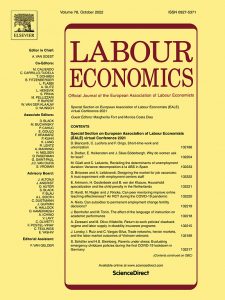The gender gap in top jobs
The role of overconfidence
Anna Adamecz-Völgyi – Nikki Shure
Labour Economics – Volume 79, December 2022
- There is a large gender gap in who reaches a “top job” by mid-career.
- We construct an overconfidence index using data on objective and subjective ability.
- Our measure confirms previous findings that men are more overconfident than women.
- This explains 5–11% of the gender gap in top job employment at age 42.
Abstract
There is a large gender gap in the probability of being in a “top job” in mid-career. Top jobs bring higher earnings, and also have more job security and better career trajectories. Recent literature has raised the possibility that some of this gap may be attributable to women not “leaning in” while men are more overconfident in their abilities. We use longitudinal data from childhood into mid-career and construct a measure of overconfidence using multiple measures of objective cognitive ability and subjective estimated ability. Our measure confirms previous findings that men are more overconfident than women. We then use linear regression and decomposition techniques to account for the gender gap in top jobs including our measure of overconfidence. Our results show that men being more overconfident explains 5–11 percent of the gender gap in top job employment. This indicates that while overconfidence matters for gender inequality in the labor market and has implications for how firms recruit and promote workers, other individual, structural, and societal factors play a larger role.
Keywords: Gender gaps, Inequality, Overconfidence, Labor market
JEL classification codes: I24, I26, J24




